Nursing Leadership Report: Implementing a Healthcare Framework
VerifiedAdded on 2022/08/26
|5
|809
|18
Report
AI Summary
This report examines a framework for safe, reliable, and effective healthcare, developed through a collaboration of experts. It outlines the framework's two main domains: cultural and learning systems, each encompassing several components. The cultural component emphasizes psychological safety, negotiation, accountability, teamwork, and communication, while the learning system focuses on improvement, measurement, transparency, reliability, and continuous learning. Leadership is highlighted as a crucial element that integrates both domains. The report emphasizes the practical application of these concepts in the workplace, including the importance of effective leadership, clear communication, transparency, and reliability to improve patient outcomes and workplace satisfaction. The conclusion stresses the significance of adopting and implementing the framework's nine components to ensure high-quality patient care within healthcare organizations. References include works by Frankel et al. (2017), Marturano (2017), Mundt et al. (2016), and Borden (2018).
1 out of 5
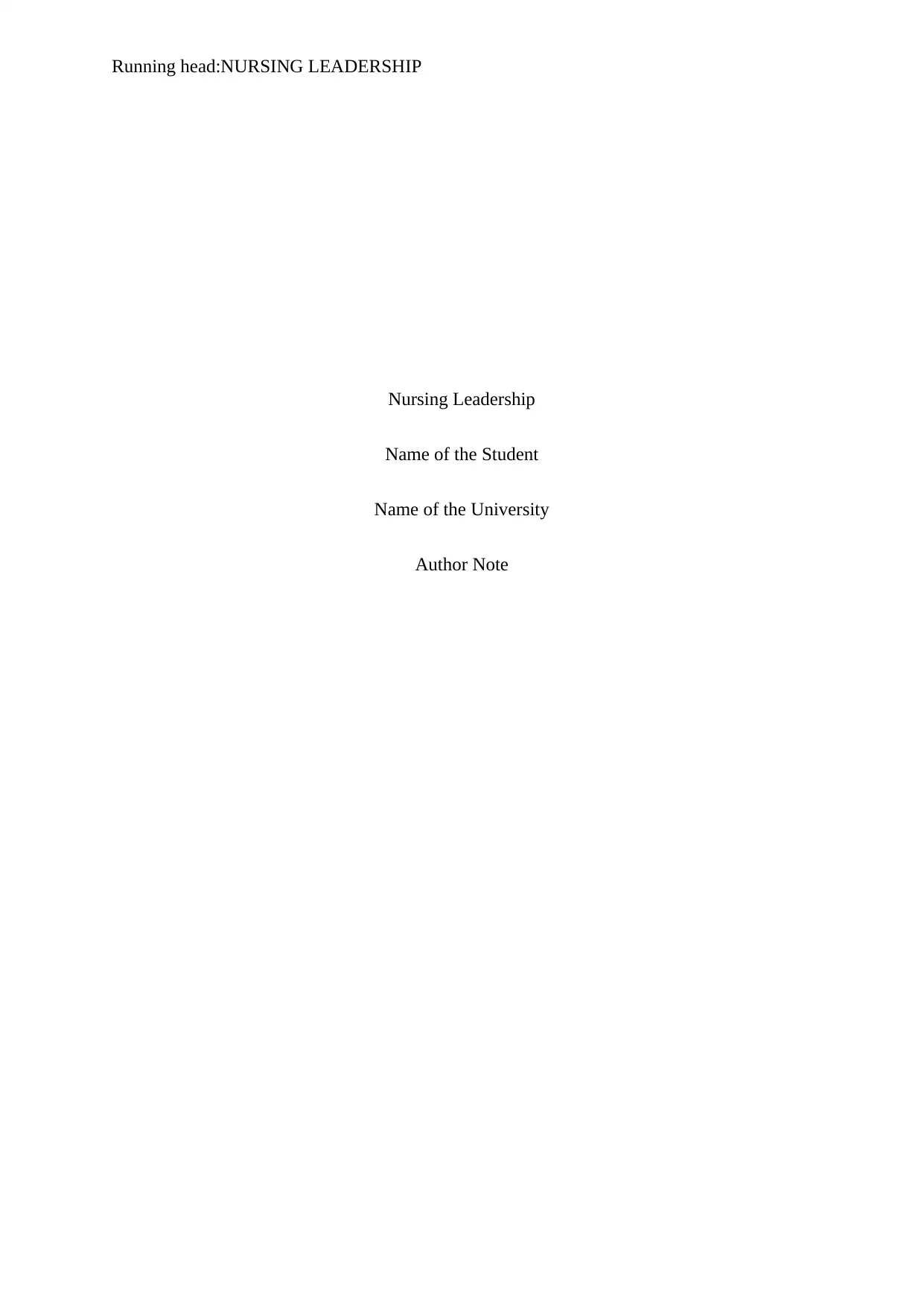
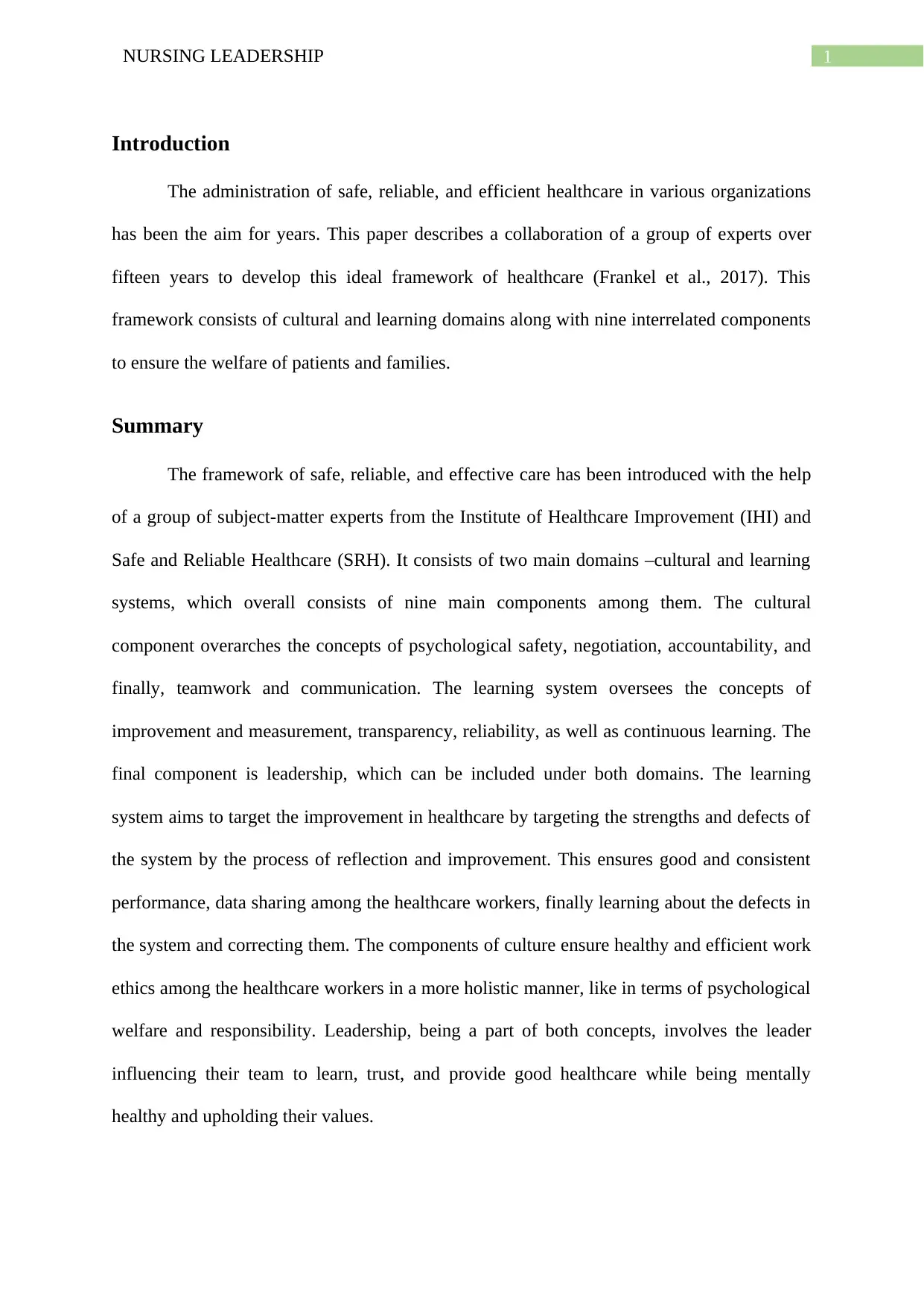
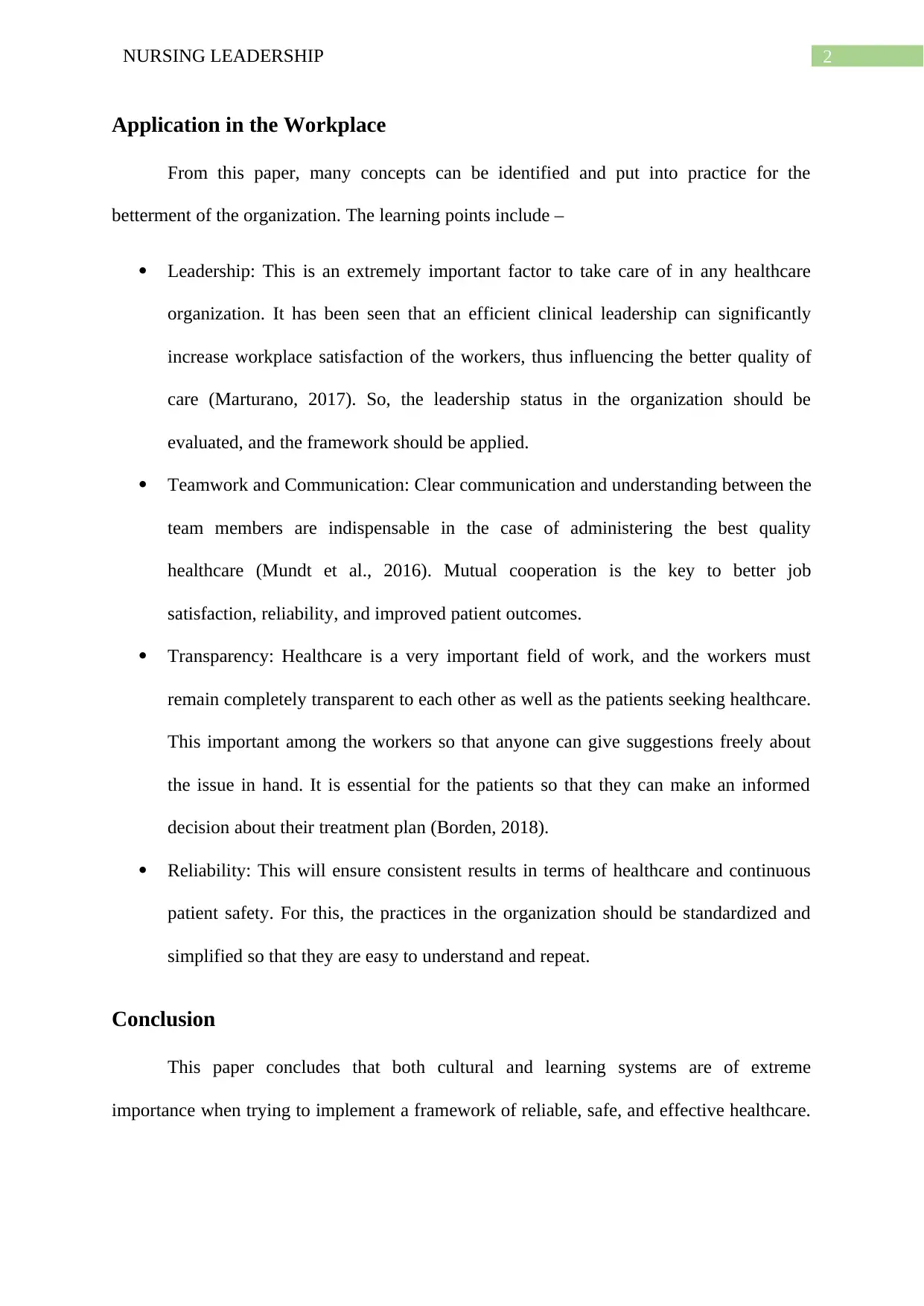

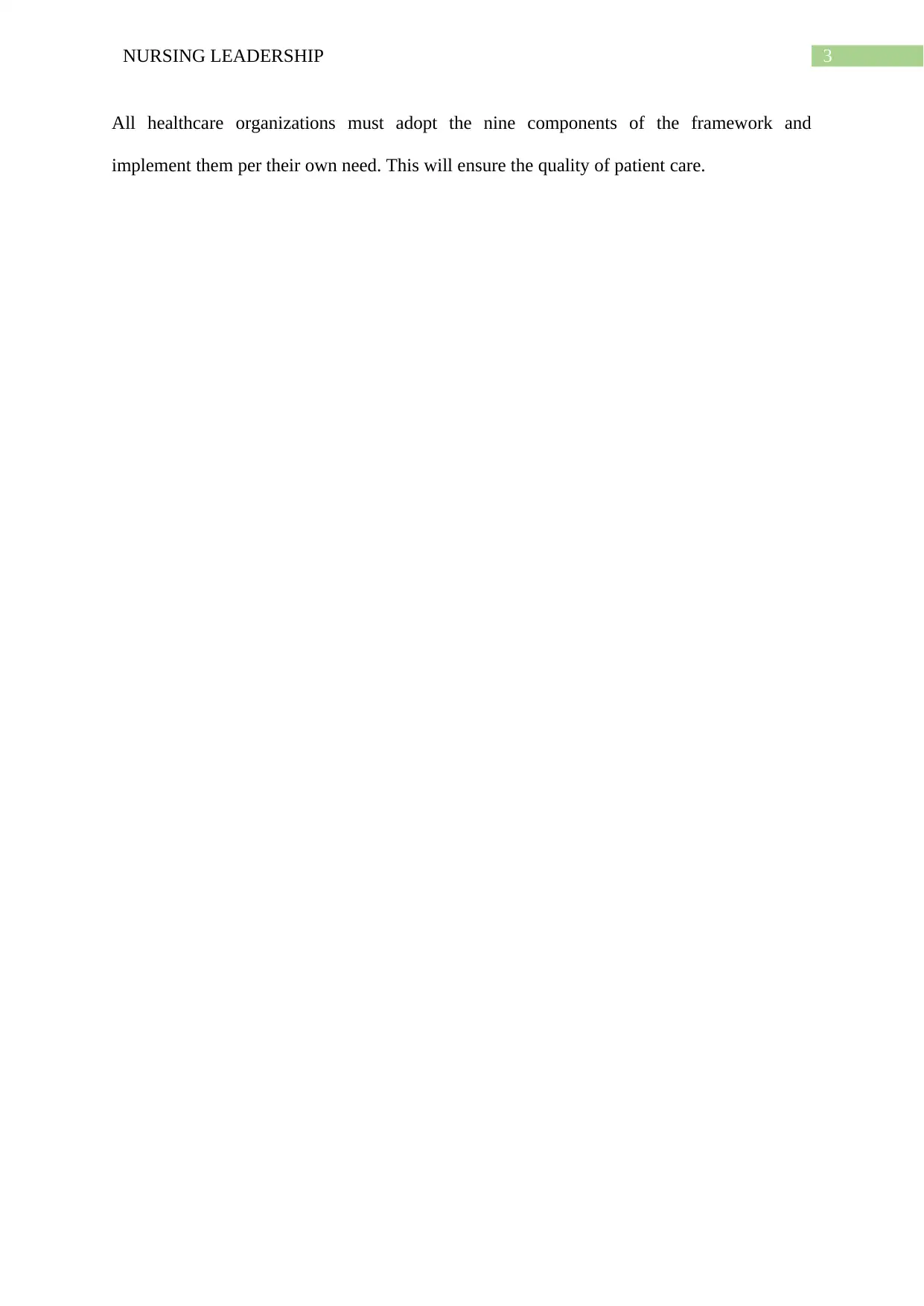
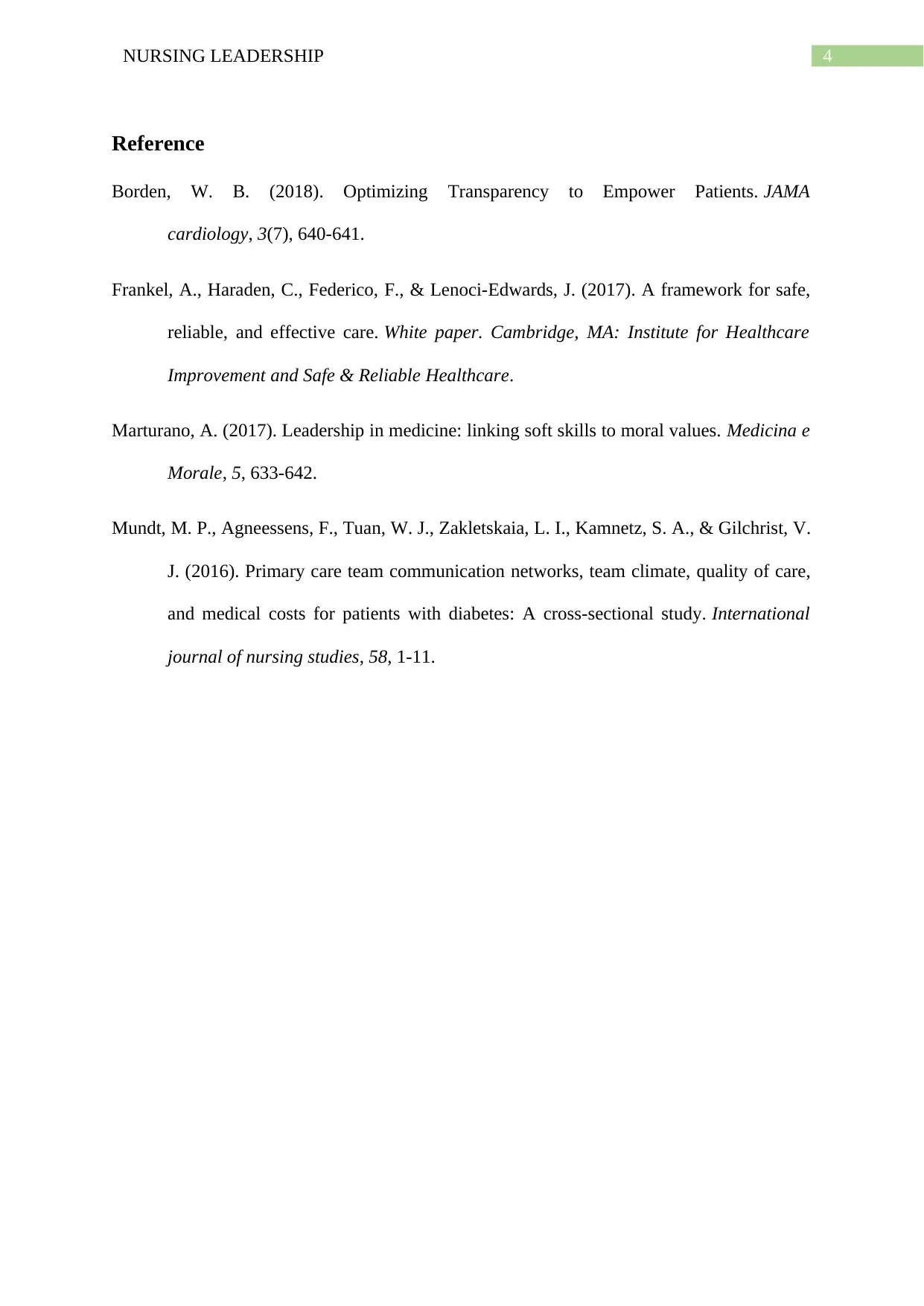






![[object Object]](/_next/static/media/star-bottom.7253800d.svg)